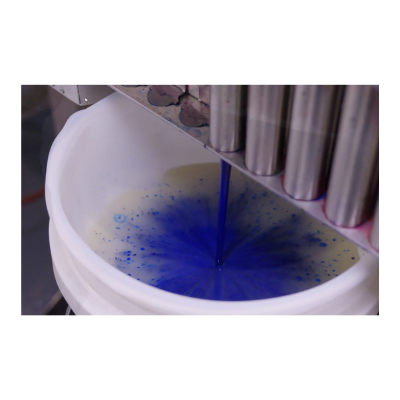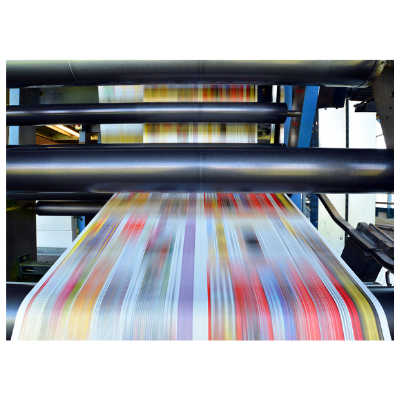According to a recent study, 84.7% of consumers state that color is the main reason that they buy specific products, while 80% think that color helps to increase overall brand recognition. In envelope manufacturing, an understanding of the ink production process can equip you with the knowledge to better protect your brand colors.
Let’s take a look at how colors are created, what the ink solution is made of and the quality processes involved with ink production.
How are Envelope Ink Colors Created?
Ink formulas are largely pre-determined by Pantone Matching System (PMS) colors. When an ink is requested for an envelope order, first the PMS color is entered into the ink mixing machine kiosk. Then, the amount of ink needed is calculated. Ink is dispensed by weight and expressed as “kits” — three gallons of ink make up one kit of ink, which weighs about thirty pounds. The number of ink colors needed will vary per envelope project, but as a reference an envelope with full coverage ink can use up to a kit of ink per hour.
Watch Now: The ink production process at Tension Corporation.
What’s in the Ink Solution?
Flexography printing processes can use either alcohol- or water-based inks. In general, inks contain pigments for color, resins as vehicles to disperse the pigments, water or alcohol solvents, and other additives (e.g. ammonia) to induce drying or to give the ink necessary properties.
Sustainability Tip: At Tension, we use water-based inks as they are more friendly to both the environment and envelope machinery.
During ink production, the ink mixing machine creates the ink formula in two steps. First, a clear liquid is poured as a base that contains the resins and ammonias. Next, the base colors are added. In this step, process or CMYK (cyan, magenta, yellow, black) colors are added to the clear base solution to produce the desired ink formula. An ink mixing machine station has twelve ink color stations, including two clear inks and ten base colors that are variations of CMYK colors.
What Processes are in Place to Assure Ink Quality?
Tension regularly monitors and checks the ink quality in three key areas:
- Viscosity – The viscosity is a measure of the flow characteristics of “soft” or liquid ink. The pros at Tension perform ink viscosity checks to ensure it is accurate — if too thin, the ink hue may appear too light; if too thick, the ink can bleed or clog the printing screen.
- pH Level – The pH level is a measure of the acidity or basicity level of the ink, and another part of the ink solution quality checks at Tension. pH levels range from 0-14, where 14 is alkaline/basic, 7 is neutral and 0 is acidic. Water-based ink solutions need higher pH levels (in the 8.5-9.5 range) in order to keep ink components soluble. If the pH is too low, the ink components will separate and won’t properly apply to the paper or the anilox rolls, which transfer ink to the printing plates.
- Spectrophotometer and Spot On Program – The spectrophotometer and Spot On program refers to an instrument that measures reflected light from colors on a printed envelope sample, and a program that computes the light absorption to ensure color accuracy.
Contact Us
Your colors and how they are printed can help drive equity, recognition and purchases for your brand. Contact an expert at Tension today to get started.




